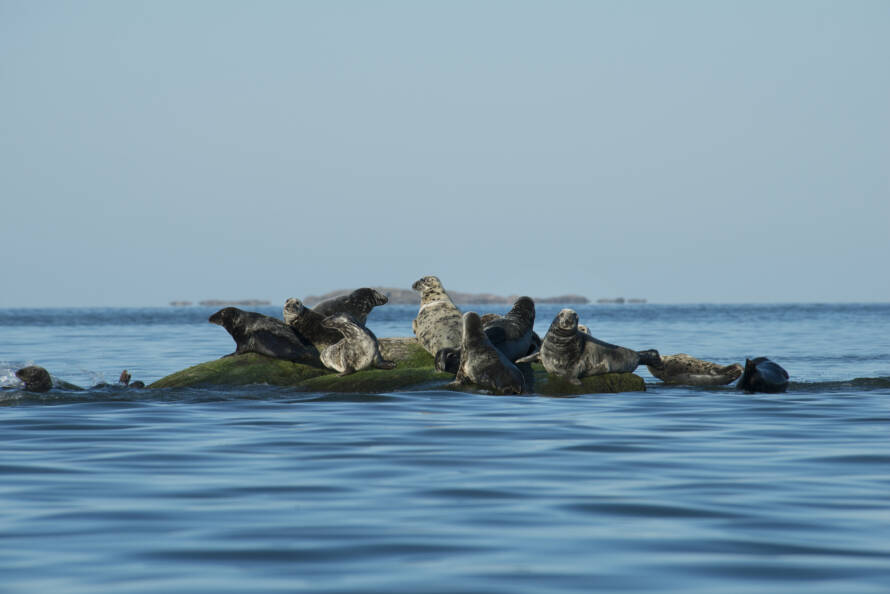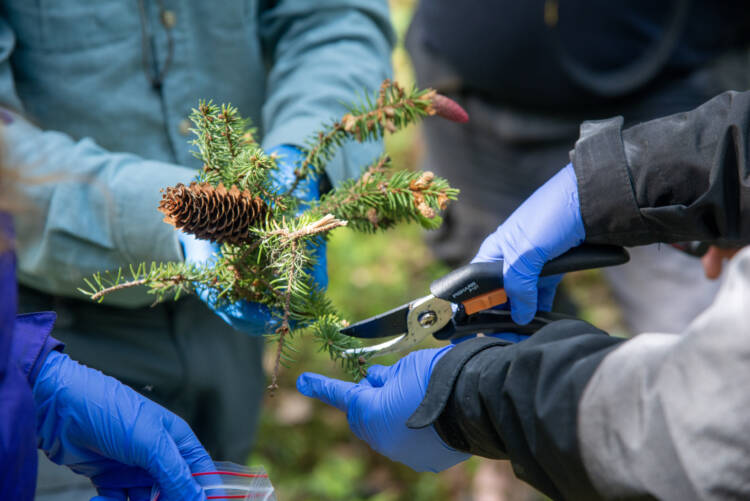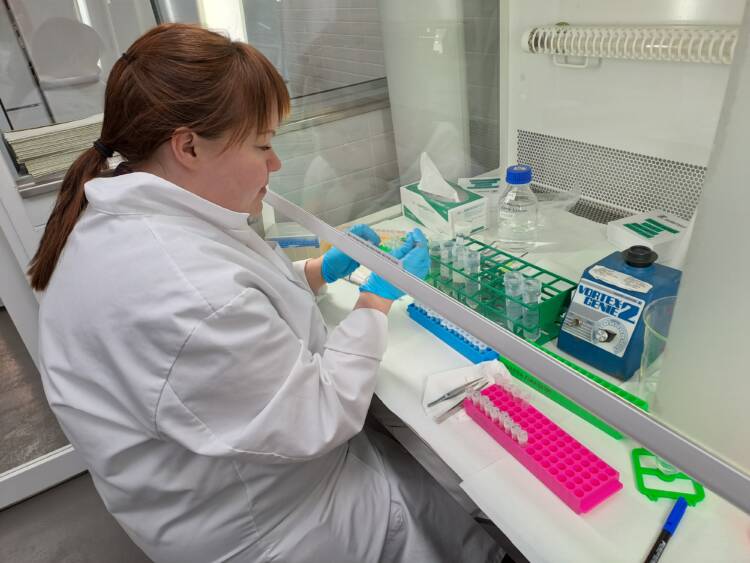Genetic diversity monitoring
Genetic diversity stems from variations in the genetic makeup of individuals, contributing to biological diversity. This diversity facilitates population adaptation to fluctuating environmental conditions and improves population viability.

On this page:
- Genetic diversity
- Genetic diversity within the framework of biodiversity
- Genetic diversity is important for human well-being
- Determining genetic diversity
- Genetic diversity in international agreements
- Genetic diversity monitoring in Finland
Genetic diversity
Genetic diversity refers to biological diversity, which consists of the differences between the genes of individuals. Genetic differences between individuals can be assorted into differences that arise from differences between species, populations of a species, and individuals within a population.
The term genetic diversity typically denotes the variation arising from genetic differences within a specific population, population group, or species as a whole. Diversity resulting from genetic differences between species is commonly referred to as either phylogenetic or evolutionary diversity.

Genetic diversity within the framework of biodiversity
Genetic diversity is a key part of biological diversity and is closely linked to the long-term survival of populations and species. Genetic diversity enables populations to adapt to changing environmental conditions and improves the viability of populations.
Correspondingly, low genetic diversity can reduce the chances of adaptation, lead to various genetic diseases or reduced reproductive potential. The decrease in reproductive potential due to low genetic diversity can in turn weaken genetic diversity and lead to the so-called extinction spiral.
The genetic diversity of species and their populations is also linked to the functioning and stability of living communities and even entire ecosystems. For example, the genetic diversity of a key species to the ecosystem can prevent the spread of harmful invasive species into that ecosystem or enhance the ecosystem’s nutrient cycle.
Genetic diversity is important for human well-being
Genetic diversity has also direct effects on human well-being. For example, by cultivating several different genetic strains of crops in the same field, the risk of insect damage can be reduced, and fewer pesticides can be used, which reduces the chemical load on people and the environment. Similarly, the extensive genetic diversity found in wild fish stocks can help stabilize their populations amidst fluctuations in environmental conditions, thereby maintaining a balance in the production of wild prey populations, which are also crucial for humans.
The genetic diversity of wild species is also significant for the discovery of new medicinal compounds and for understanding the potential development of resistances to them.
Determining genetic diversity
Genetic diversity is most reliably determined by looking at the DNA base pair arrangements of the entire genetic inheritance of organisms, i.e. genomes or parts of genomes (so-called sequence data) or the lengths of the repeats in DNA (so-called fragment data). Both require molecular genetic methods, but the exact method may vary depending on the species under consideration and available resources.
Various metrics reflecting genetic diversity can be derived from sequence or fragment data. Often these are very similar in characteristics to numerical descriptors used for species diversity. For example, akin to the count of species in a specific area, the number of distinct alleles, or counterpart genes, within a certain gene region can be computed for a population of a species (referred to as allelic richness). Additionally, for species with multiple sets of chromosomes, numerical measures are often calculated to quantify the likelihood of an individual possessing two different alleles at a given gene locus (referred to as heterozygosity).

The statistical dynamics of a population’s genetic diversity, such as the intensity of random fluctuations affecting the genetic structure, is often illustrated through the concept of effective population size (Ne). The effective population size describes the genetic diversity of the ideal population that the genetic diversity of the population corresponds to. In many cases, the effective population size does not align with the actual number of individuals in the population but is notably smaller.
The effective population size possesses certain properties that make it a favored indicator of genetic diversity. Because it characterizes the statistical dynamics of the population’s genetic structure, it not only reflects the present state of genetic diversity but also forecasts its trajectory across generations. Threshold values of 50 and 500 have been established for the effective population size. The former serves as a threshold to prevent short-term inbreeding depression (approximately 5 generations), while the latter acts as a threshold for the population’s capacity to adapt to long-term environmental changes.
Genetic diversity in international agreements
The United Nations (UN) Convention on Biological Diversity (CBD), also known as the Biodiversity Convention, has established the objective of preserving and restoring the genetic diversity of populations of both wild and domesticated species (Target 4, CBD/COP/DEC/15/4). The recent alignment of the UN Convention on Biodiversity with the Kunming-Montreal Biodiversity Framework is a historic development in terms of genetic diversity. For the first time, it includes consideration for wild species that are not direct human resources or closely related to production species. Previous agreements, such as the UN Sustainable Development Goals and the Aichi Targets of the UN Biodiversity Convention set for 2020, only addressed genetic diversity in species utilized by humans.
Monitoring the attainment of the genetic diversity objectives outlined in the Kunming-Montreal biodiversity framework involves an indicator linked to the effective population size. This indicator aims to assess whether natural populations meet the minimum threshold of 500 effective individuals as previously mentioned.
Genetic diversity monitoring in Finland
In Finland, systematic monitoring of genetic diversity is limited to a small number of wild organisms. The most extensive monitoring efforts are directed towards mammal and fish species that are of particular interest to humans. The Natural Resources Institute Finland routinely monitors, for example, wolves’ genetic diversity, hybridization with dogs, and population structure. Additionally, volunteer-led DNA-based monitoring initiatives were piloted for bears in 2022-2023. Genetic diversity studies for other large carnivores, the Saimaa ringed seal, and Salmonidae have been undertaken through various research projects, some of which have been ongoing for an extended period and exhibit characteristics of systematic monitoring.
The statutory preservation and protection of primary production genetic resources in Finland are overseen by the Genetic Resource Advisory Board, appointed by the Ministry of Agriculture and Forestry. The activities of the national advisory board for genetic resources are outlined in the national genetic resources programs, covering genetic resources in agriculture, forestry, and fisheries.
References
Scientific articles:
Des Roches et al. 2018. The ecological importance of intraspecific variation. Nature Ecology & Evolution, 2, 57–64. The ecological importance of intraspecific variation | Nature Ecology & Evolution(you are switching to another service)
Des Roches et al. 2020. Conserving intraspecific variation for nature’s contributions to people. Nature Ecology & Evolution, 5, 574–582. Conserving intraspecific variation for nature’s contributions to people | Nature Ecology & Evolution(you are switching to another service)
Hughes et al. 2008. Ecological consequences of genetic diversity. Ecology Letters, 11, 609–623. Ecological consequences of genetic diversity – Hughes – 2008 – Ecology Letters – Wiley Online Library(you are switching to another service)
Conventions:
CBD 2022, Decision Adopted by the Conference of the Parties to the Convention on Biological Diversity, 15/4. Kunming-Montreal Global Biodiversity Framework (cbd.int)(you are switching to another service)